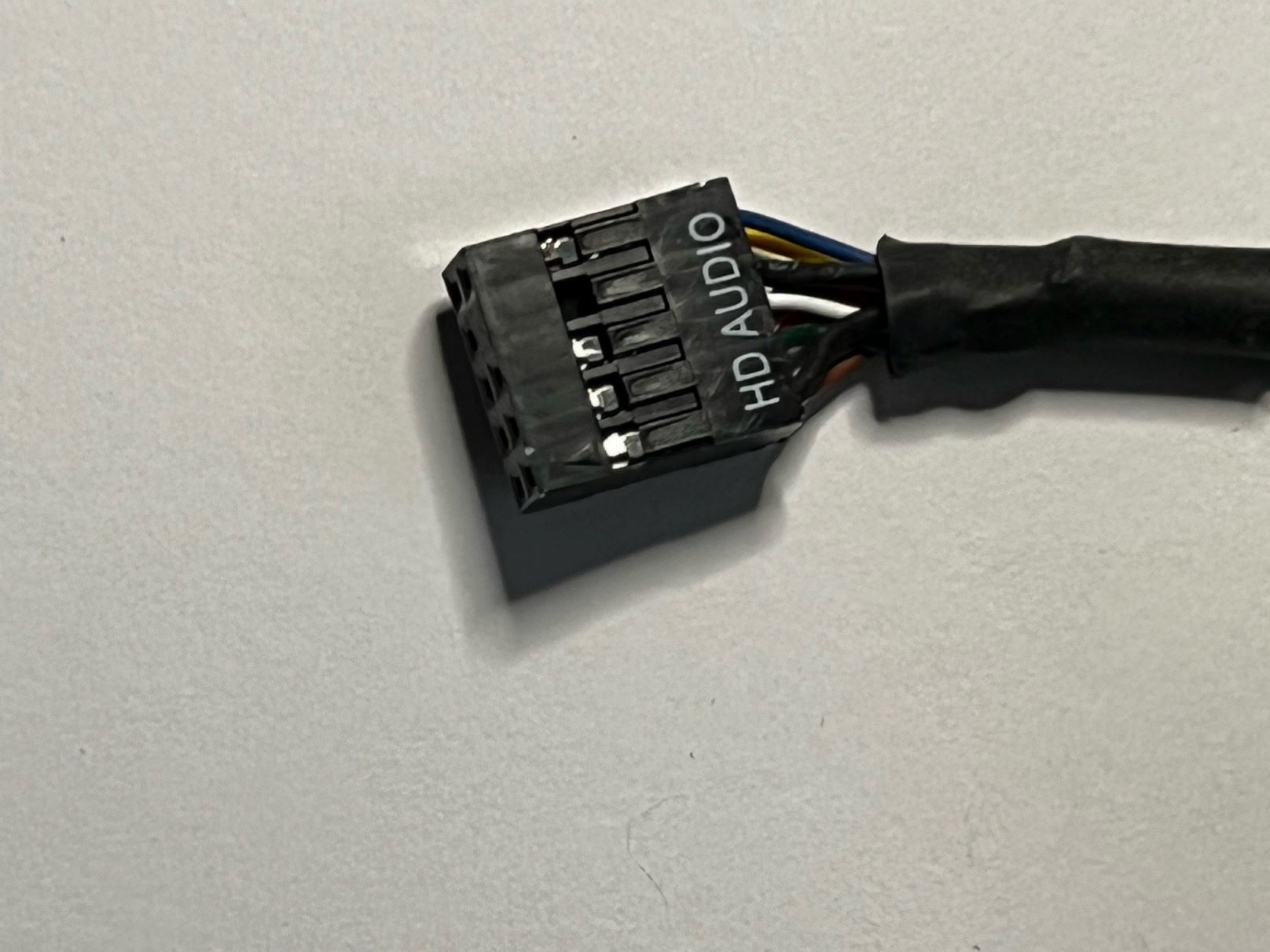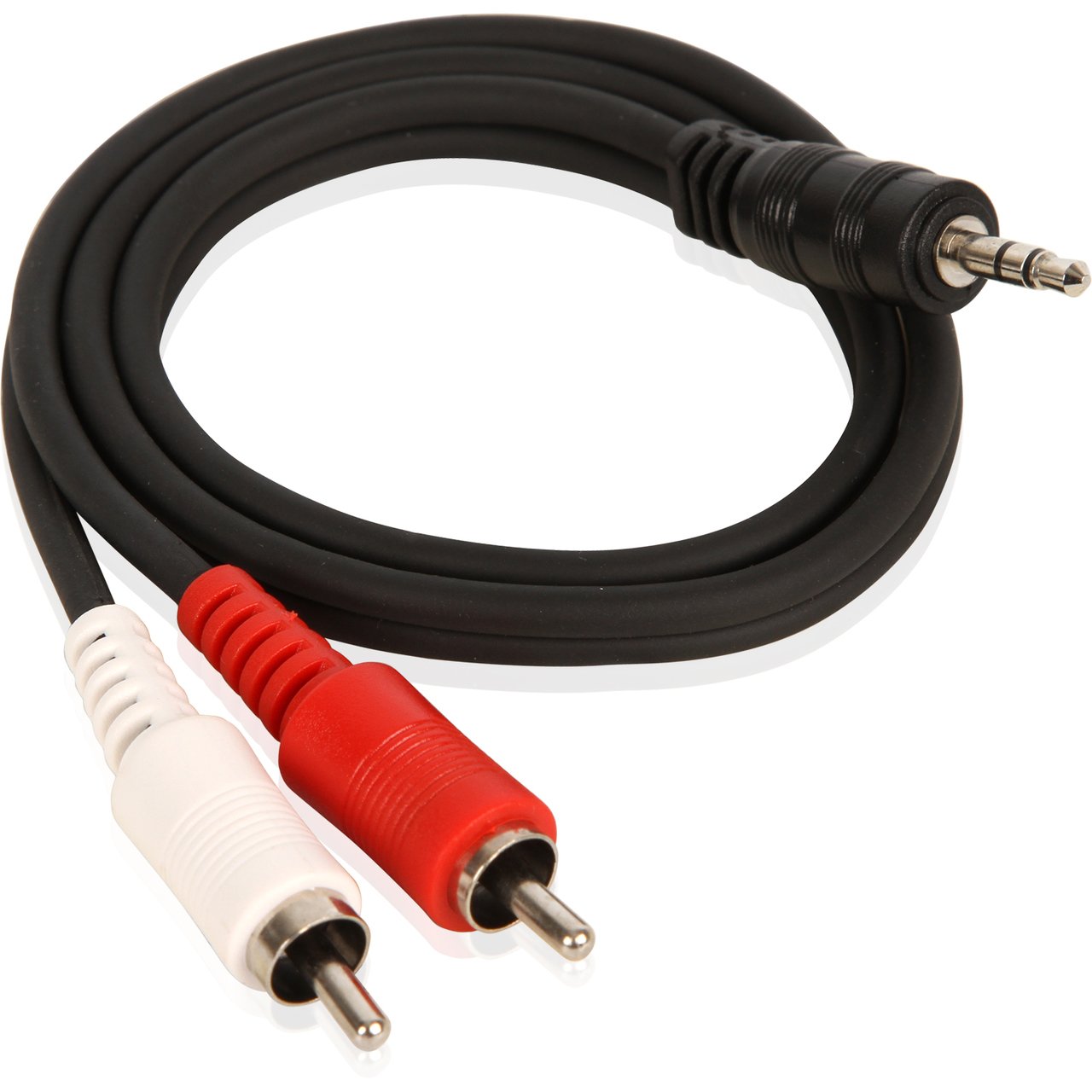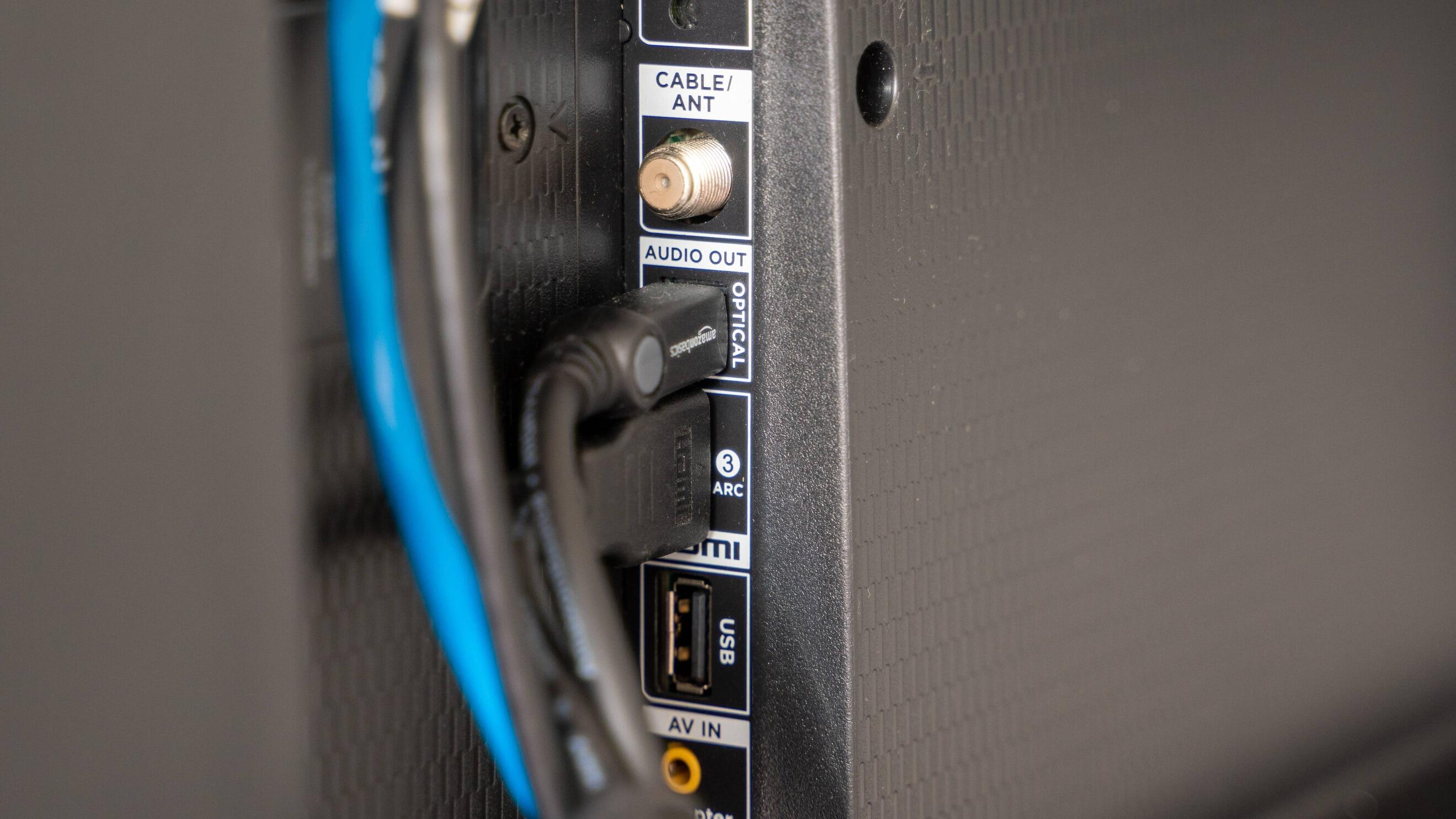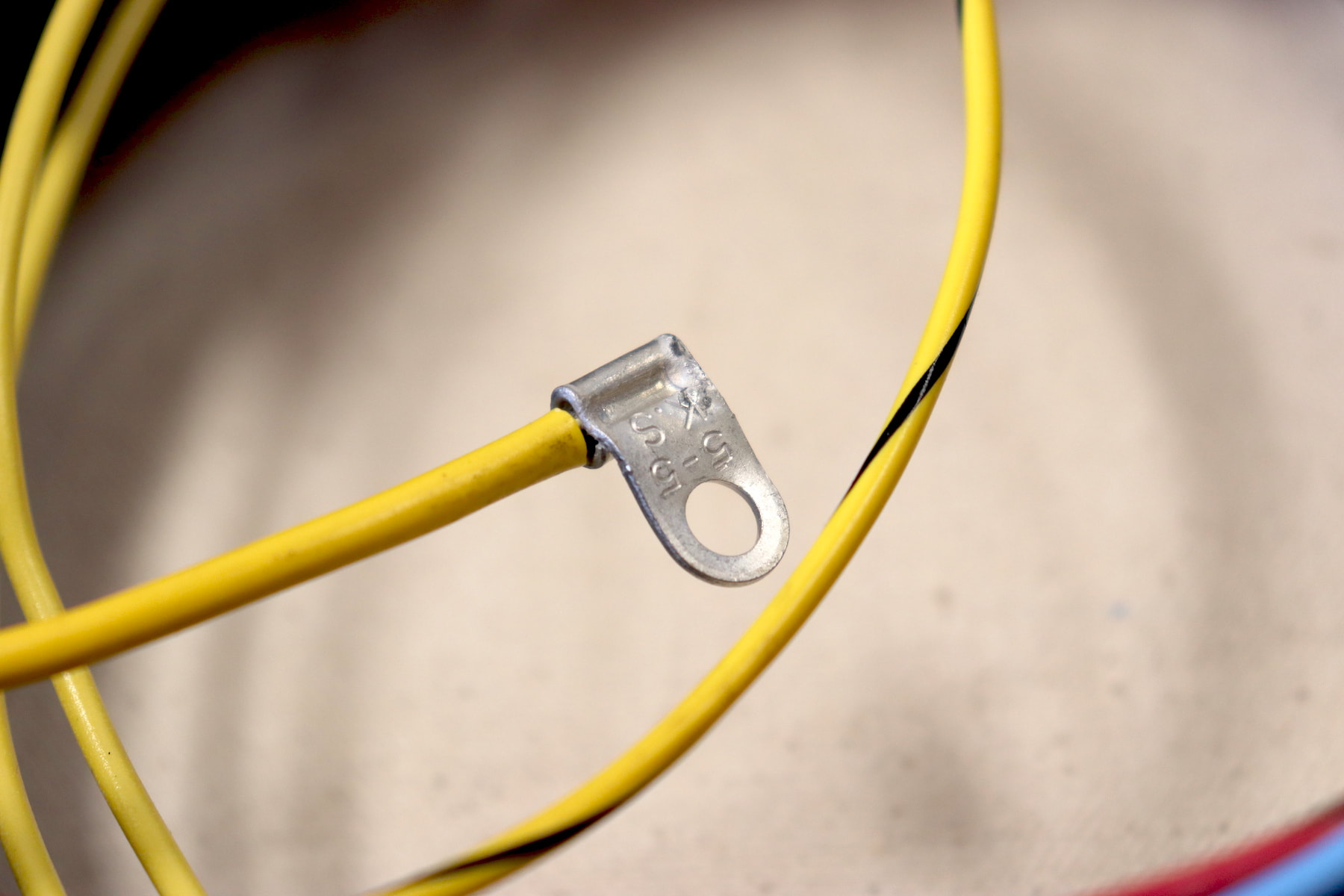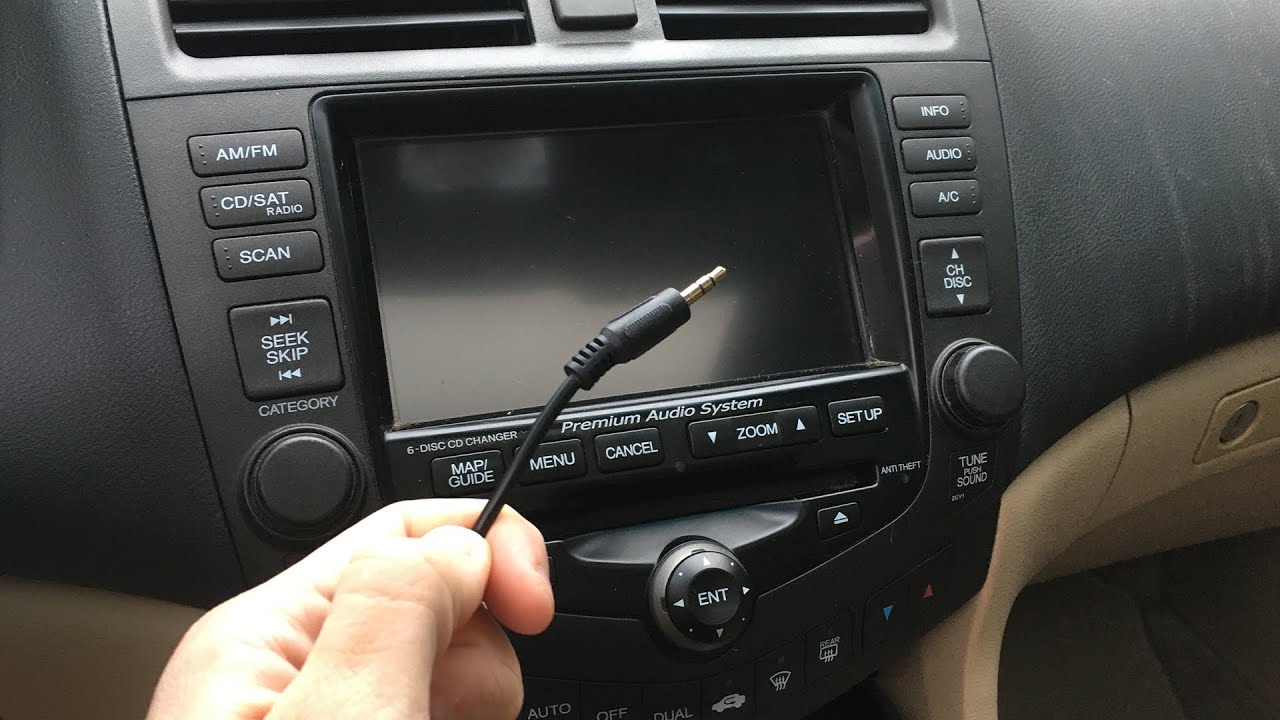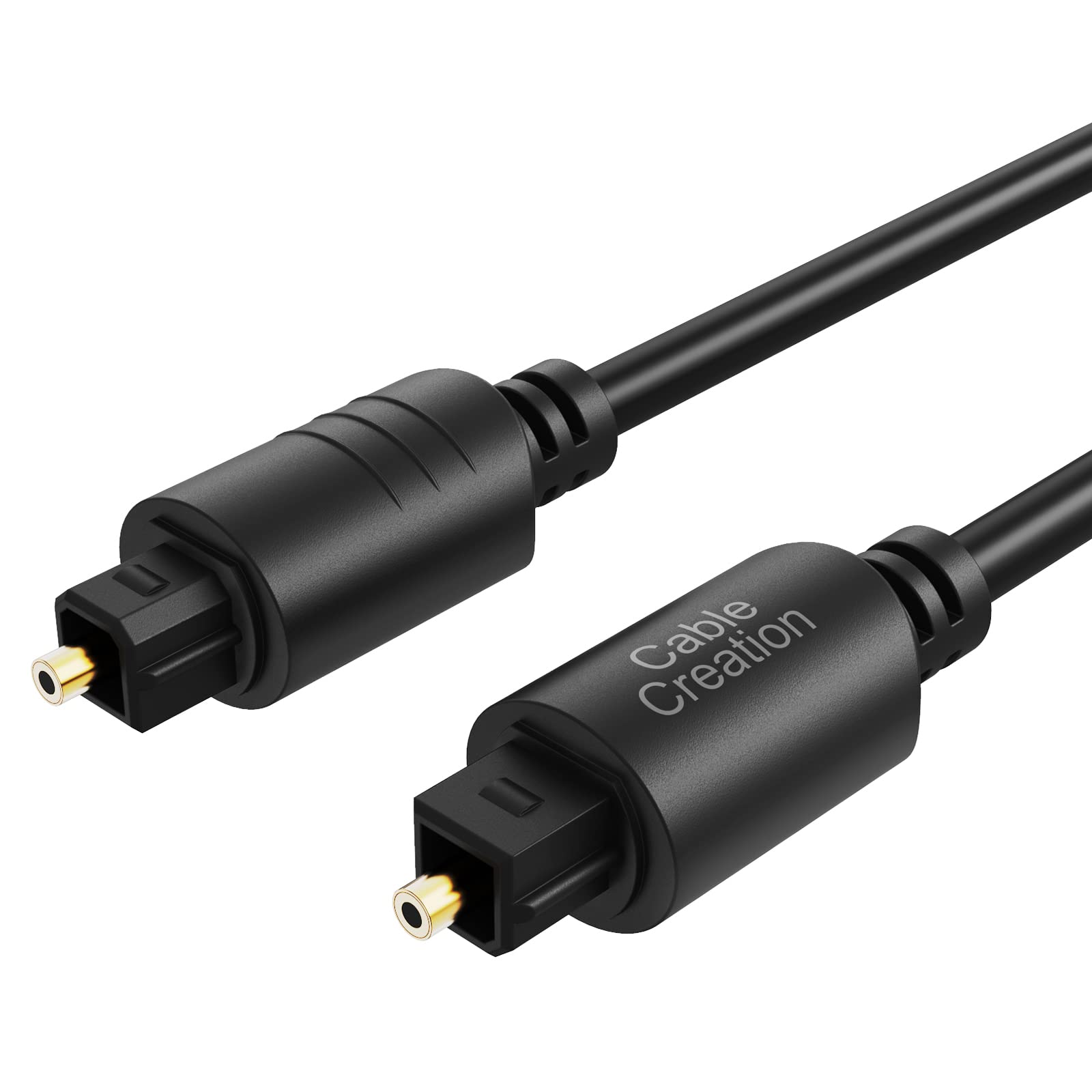Home>Production & Technology>Audio Cable>Where Does The Audio Cable Go
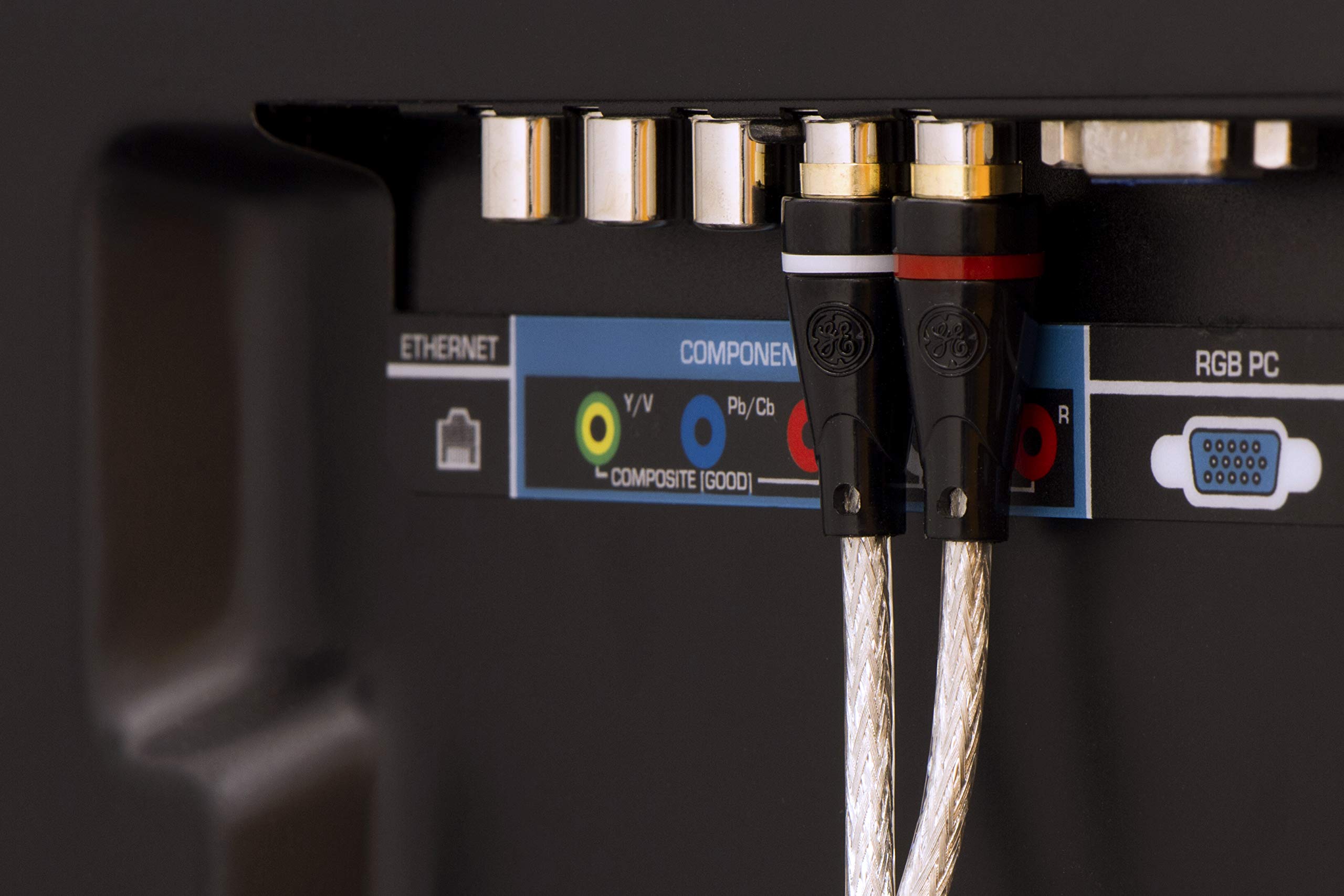

Audio Cable
Where Does The Audio Cable Go
Modified: March 7, 2024
Learn where the audio cable goes and how to connect it easily. Follow our step-by-step guide and enjoy high-quality sound in no time.
(Many of the links in this article redirect to a specific reviewed product. Your purchase of these products through affiliate links helps to generate commission for AudioLover.com, at no extra cost. Learn more)
Table of Contents
Introduction
Welcome to the world of audio cables, where the magic of sound is transmitted from one device to another. Whether you’re a music enthusiast, a gamer, or an audio professional, understanding the intricacies of audio cables is crucial to achieving the best audio quality possible.
Audio cables are the unsung heroes behind every audio setup. They are the conduits through which sound travels, connecting various audio devices and components together. From headphones and microphones to speakers and amplifiers, audio cables play a pivotal role in delivering high-quality audio signals.
In this article, we will delve into the world of audio cables, exploring their different types, common uses, and their connection options. We will also answer the question, “Where does the audio cable go?” to help you understand how to properly connect your audio devices.
Whether you’re a beginner or an experienced audio enthusiast, this article will provide you with valuable insights and knowledge about audio cables. So, let’s dive in and unravel the mysteries of the audio cable world!
What is an audio cable?
An audio cable is a physical medium used to transmit audio signals from one audio device to another. It is composed of one or multiple conductive wires enclosed in an insulating material, with connectors at each end for easy connection to audio devices.
Audio cables come in various formats, lengths, and configurations, depending on the specific audio application and equipment being used. The primary purpose of an audio cable is to carry the electrical audio signals accurately and efficiently, ensuring that the sound is reproduced faithfully and without interference.
There are two main types of audio cables: analog and digital. Analog cables transmit audio signals in an electrical waveform, while digital cables transmit audio signals as digital data. The choice between analog and digital cables depends on the type of audio equipment and the desired audio quality.
When shopping for audio cables, you may encounter terms like XLR, RCA, TRS, and TS. These refer to different types of connectors used on audio cables. XLR connectors are commonly used for professional audio applications, while RCA connectors are prevalent in consumer audio setups. TRS and TS connectors are typically found on headphones, instruments, and professional audio equipment.
It’s important to note that the quality of an audio cable can impact the overall sound reproduction. Factors such as cable construction, shielding, and connector quality can affect the clarity, dynamic range, and noise-free performance of the audio signal. Therefore, investing in high-quality audio cables can make a significant difference in the audio experience.
Now that we have a basic understanding of what an audio cable is, let’s explore the different types of audio cables in more detail.
Types of audio cables
There are several types of audio cables available, each serving specific purposes and catering to different audio setups. Understanding the differences between these audio cables will help you make informed decisions when it comes to selecting the right cables for your audio needs. Here are some of the most common types of audio cables:
- 1. RCA Cables: RCA cables, also known as phono cables, are widely used in consumer audio applications. They typically have two connectors, one with a red plug for the right audio channel and another with a white or black plug for the left audio channel. RCA cables are commonly used for connecting DVD players, game consoles, and home theater systems to televisions and audio receivers.
- 2. XLR Cables: XLR cables are commonly used in professional audio setups. They feature three-pin connectors that ensure balanced audio signals and provide noise-free transmission over longer distances. XLR cables are often used to connect microphones, speakers, amplifiers, and audio interfaces.
- 3. TRS Cables: TRS cables, also known as Tip-Ring-Sleeve cables, are primarily used for stereo audio signals. They have a 1/4-inch connector with three conductors: one for the left audio channel (tip), one for the right audio channel (ring), and one for the ground or common signal (sleeve). TRS cables are commonly used for connecting headphones, instruments, and studio audio equipment.
- 4. TS Cables: TS cables, also known as Tip-Sleeve cables, are similar to TRS cables but have a mono configuration. They have a 1/4-inch connector with two conductors: one for the audio signal (tip) and one for the ground (sleeve). TS cables are commonly used for connecting instruments such as electric guitars and keyboards to amplifiers.
- 5. Optical Cables: Optical cables, also known as TOSLINK or SPDIF cables, transmit audio signals in a digital format using light pulses. They are typically used to connect audio devices that have optical ports, such as soundbars, home theater systems, and gaming consoles.
- 6. HDMI Cables: While primarily used for video signals, HDMI cables can also transmit audio signals. They are commonly found in home theater systems, gaming consoles, and audio-video receivers. HDMI cables support high-quality audio formats and can carry both digital audio and video signals.
It’s important to choose the appropriate type of audio cable based on the specific audio equipment and setup. Using the right cable ensures optimal audio quality and prevents signal degradation or interference. Now that we know the different types of audio cables, let’s explore the common uses of these cables in various audio setups.
Common uses of audio cables
Audio cables are integral to connecting audio devices and creating seamless audio setups. They serve a variety of purposes in different audio applications and setups. Here are some common uses of audio cables:
- 1. Home Audio Systems: Audio cables are used to connect audio sources like CD players, turntables, or streaming devices to amplifiers or receivers. RCA cables are commonly used for this purpose, ensuring clean and reliable audio transmission.
- 2. Studio Recording: In professional recording studios, XLR cables are widely used to connect microphones, instruments, and studio monitors. XLR cables provide balanced audio transmission, reducing external noise interference and maintaining audio integrity.
- 3. Live Sound Reinforcement: Audio cables are essential in live sound setups. XLR and TRS cables connect microphones, instruments, and audio sources to mixing consoles, stage monitors, and amplifiers.
- 4. DJ Setups: DJs rely on audio cables to connect turntables, CDJs, or controllers to mixers and speakers. RCA and XLR cables are commonly used, ensuring smooth signal flow and reliable audio connectivity.
- 5. Home Theater Systems: HDMI cables are widely used in home theater systems, carrying both audio and video signals. They connect devices like Blu-ray players, streaming boxes, or gaming consoles to televisions or audio-video receivers, delivering immersive and high-quality audio experiences.
- 6. Gaming Setups: Audio cables play a significant role in gaming setups. They connect gaming consoles, computers, or gaming headsets to speakers, headphones, or audio mixers, providing an immersive gaming audio experience.
In addition to these common uses, audio cables find applications in various industries such as education, presentations, conferences, and live performances. Choosing the right audio cable ensures optimal audio quality, minimizes signal loss, and prevents interference, creating an enhanced audio experience for the listener.
Now that we understand the common uses of audio cables, let’s explore the different connection options available for audio cables.
Connection options for audio cables
When it comes to connecting audio cables, there are various options available depending on the type of audio devices and the desired audio setup. Here are some common connection options for audio cables:
- 1. Direct Connection: The most straightforward method of connecting audio cables is through a direct connection between two audio devices. This involves plugging one end of the cable into the audio output of the source device and the other end into the audio input of the destination device. This method is commonly used for connecting devices like MP3 players, smartphones, or laptops to speakers or headphones.
- 2. Audio Interface: Audio interfaces are external devices that act as a bridge between audio sources and a computer. They provide professional-grade audio input and output connections, allowing you to connect microphones, instruments, or other audio devices to your computer for recording or broadcasting. Audio interfaces typically use USB, Thunderbolt, or FireWire connections.
- 3. Mixing Console: When working with multiple audio sources in a professional setup, a mixing console is used. This allows you to connect various audio devices like microphones, instruments, or media players to the console, and then output the mixed audio signal to speakers, headphones, or recording devices using audio cables.
- 4. Audio Splitter: An audio splitter is used when you need to split the audio signal from one source device into multiple outputs. This can be useful in scenarios where you want to connect multiple headphones or speakers to a single audio output. Audio splitters typically have multiple input ports and multiple output ports, allowing you to connect several devices simultaneously.
- 5. Audio Switcher: An audio switcher allows you to switch between different audio sources connected to a single output device. This is useful when you want to connect multiple audio sources, such as a computer, gaming console, or media player, to a single set of speakers or headphones. The switcher gives you the flexibility to select which audio source you want to listen to at any given time.
- 6. Wireless Transmitters: In some cases, you may opt for wireless audio transmission instead of using physical audio cables. Wireless transmitters and receivers can be used to transmit audio signals wirelessly from one device to another, eliminating the need for direct cable connections. This is particularly common in wireless audio systems, wireless headphones, or wireless speakers.
Choosing the appropriate connection option for your audio cables depends on the specific devices you are connecting, the desired audio setup, and your personal preferences. It’s essential to ensure compatibility between the audio devices and the connection type to ensure seamless audio transmission.
Now that we’ve explored various connection options, let’s answer the question of where the audio cable goes in different audio setups.
Where does the audio cable go?
The placement of audio cables in an audio setup depends on the devices you are connecting and the desired audio configuration. Here are some common scenarios where audio cables are used:
- 1. Headphones: For personal listening, audio cables are typically used to connect headphones to devices such as smartphones, audio players, or computers. The audio cable typically goes from the headphone’s connector to the audio output of the device.
- 2. Speakers: When connecting speakers to audio sources, the audio cable usually connects the audio output of the source (such as an amplifier or audio receiver) to the input of the speakers. The specific connections may vary depending on the speaker type (active/powered or passive) and the audio equipment being used.
- 3. Microphones: In recording or live sound setups, audio cables are used to connect microphones to audio interfaces, mixing consoles, or PA systems. The audio cable connects the microphone’s output (usually XLR) to the audio input of the receiving device.
- 4. Instruments: For instruments like guitars, keyboards, or electronic drums, audio cables are used to connect the instrument’s output to amplifiers, audio interfaces, or mixing consoles. The cable goes from the instrument’s output (such as a 1/4-inch TS or TRS connector) to the appropriate input on the receiver device.
- 5. Home Theater Systems: Audio cables play a crucial role in connecting different components of a home theater system. They connect devices such as Blu-ray players, gaming consoles, or streaming devices to audio-video receivers or soundbars. HDMI cables are commonly used to carry both audio and video signals between these devices.
- 6. Audio Mixers: In professional audio setups or recording studios, audio cables are used to connect various audio sources to audio mixers. This includes connecting microphones, instruments, media players, or other audio devices to inputs on the mixer. The specific connections depend on the type and number of inputs and outputs available on the mixer.
It’s important to ensure that you choose the correct audio cable type and make appropriate connections based on the devices you are using. Regularly check the audio cables for any damage or wear and ensure they are securely connected to prevent any audio signal loss or interference.
By understanding where the audio cable goes in different audio setups, you can ensure proper connections and enjoy high-quality sound reproduction in your audio system.
Conclusion
Audio cables may seem like simple components, but they play a vital role in the world of audio. They are the invisible highways through which sound travels, connecting audio devices and delivering the magic of music, movies, and more.
In this article, we explored the fundamentals of audio cables, including their types, common uses, connection options, and where they go in different audio setups. We learned about analog and digital cables, such as RCA, XLR, TRS, TS, optical, and HDMI, and their specific applications. We also discussed the various connection options, from direct connections to mixers, headphones, speakers, and more.
By understanding the different types of audio cables and their applications, you can make informed decisions when it comes to selecting the right cables for your audio needs. Whether you’re setting up a home audio system, a professional recording studio, or a gaming setup, knowing how to connect your audio devices properly will ensure optimal audio quality and a seamless listening experience.
Remember to consider factors like cable construction, shielding, and connector quality when investing in audio cables. High-quality cables can make a significant difference in the sound reproduction, reducing interference and providing clearer and more accurate audio signals.
So, whether you’re a music aficionado, a sound engineer, or a casual listener, taking the time to understand and appreciate the importance of audio cables will help you unlock the full potential of your audio devices and immerse yourself in a world of rich, high-fidelity sound.


